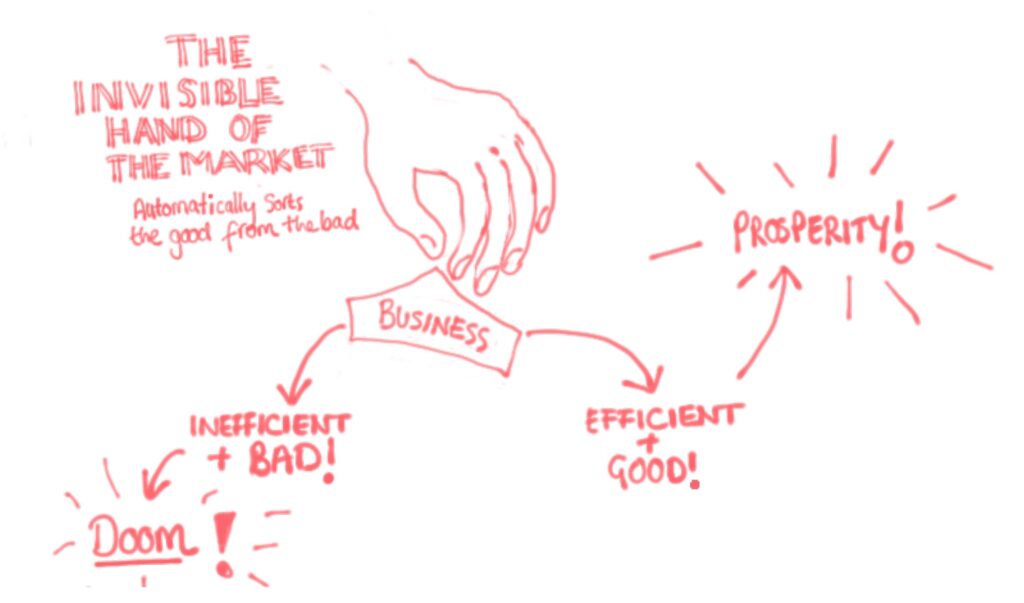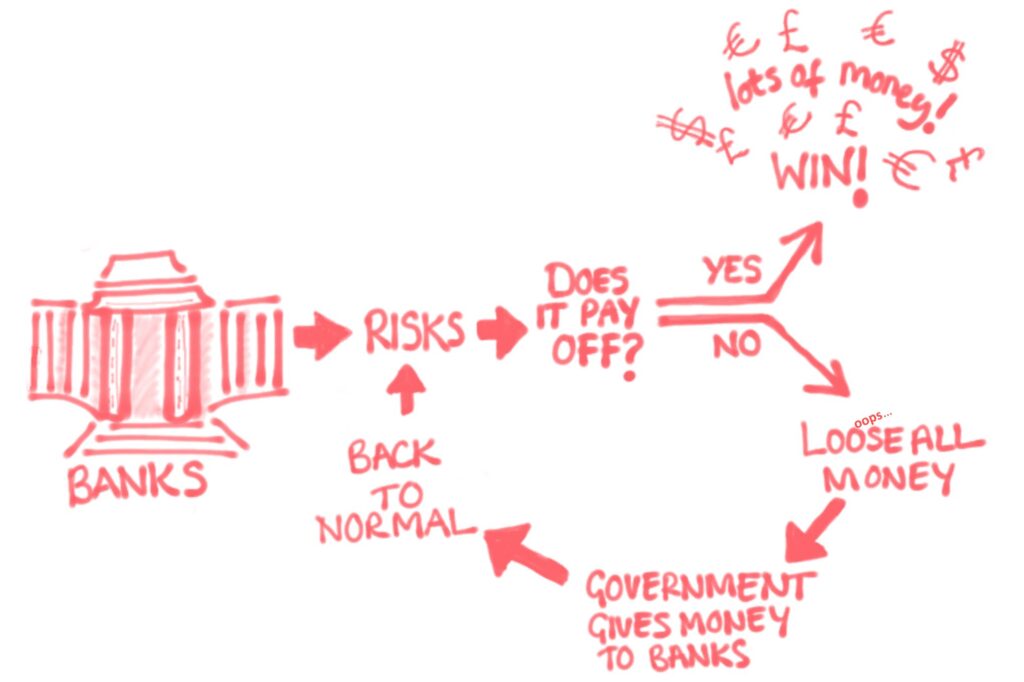The theory of the free market and supply and demand is what underpins today’s economy. This post gives a clear, readable overview of the theories Adam smith, possibly the most famous economist, who came up with the ideas that shaped todays societies.
This is part 1– the second part explains the principles of Adam smith’s work at play in a real life microcosm scenario in a prisoner of war camp.
Supply and demand is what is studied (in such a dry way) in textbook economics courses all over the country. This post is not about the maths. It’s about the concepts and what they mean.
The theory of the invisible hand
Supply and demand are the two keywords of economic theories. If supply is the amount of product, process or service available and demand is the amount of people willing to exchange that product, process or service for money, then it makes sense that the two are linked. A sudden high demand for vegan meat substitutes, would mean a lot more people would try and sell them. If there is only one brand available, that brand can charge a lot because there is no competition. When lots of brands competing for buyers, the price gets driven down because of competition. That’s the principle. It’s simple but has very interesting consequences.

Adam Smith’s super famous theory is that of the ‘invisible hand’ which says that there are invisible market forces that set prices by equating supply and demand (i.e. what I just wrote about above). The ‘Market’ is like the trading ground where the sellers check out what other stalls are selling. They chat to customers to get a sense for what’s in demand and then choose how to set the prices on their stall. The interesting part of the theory is that he argues this is the most effective and productive way to trade. He believed that competition forces people to produce better and better services which leads to bad ones being slowly filtered out. The process causes only the absolute best, highest quality and most adequately priced products and services to flourish.
It’s a bit like business survival of the fittest…
…you get customers when and only when you’re as efficient as you can be and charge the perfect market price for your service. If you’re outside this mark, customers will go elsewhere and your business won’t succeed. It’s a harsh environment. Each man fights for himself/his business.
Individuals should act in their own interests
He thought the system would be most effective when individuals act in their own best interests with no interference from governments. He thought that any regulation from the government to do with selling or buying would favour some sectors over others and direct the economy away from its naturally most efficient state. Governments have intervened many times in history to push the economy in a direction that might better serve the state as a whole. True or not, Smith’s argument says this creates inefficiencies. (If you’re thinking- wasn’t his theory about freedom from rent, not government? Yeah, sorry…I will have more and more posts delving in and re-shaping the key ideas. At the moment I’m still explaining them as they are most commonly discussed to bring those who just want to basics on board 🙂 thanks for checking on me!)
It’s complicated to imagine how a market forms and creates an optimal price point for everything relative to everything else based of the balance between supply and demand. The best illustration of this (that sits in my mind whenever i imagine freely moving markets) is an example of the economy that developed in a world war 2 prisoner of war camp, written about by the economist Richard A Radford. I’ve described this in a new post called Trade and Free market part 2.
A closer look at Adam Smiths theories
Adam smith didn’t believe in no role for Government. He believed the government should set the laws within which the Banks businesses and institutions could compete. He also believed that the risks a bank took should be somewhat controlled by morals. At the moment banks are pretty free to take risks because if they fail, the Government and the Treasury are forced to lend them money, meaning they don’t ever really risk failing. This money lending is paid for by the taxpayer and is super expensive. It’s what happened after the 2008 financial crisis. Adam smith recognised that the ‘moral hazard’ of the risks banks take had to be somehow included in the competition so that they don’t take such outrageous risks that put themselves in a position where the tax payer needs to lend them money.

Smith thought the market alone should determining the economic direction of a country. This would have led to activities that are totally unethical today. If the market recognised it was profitable to trading slaves, then Smith supported that. He supported government spending for defense and education.
Some context for the 1700’s when these ideas came about
Smith was born in 1723 in Scotland. His ideas were formed before the technological revolution. This means his thoughts on newer, more abstract economics are not explicitly recorded (although often guessed at). Smith was against classing a ‘service’ as a source of value. This is hard to imagine since most of our economy today trades services. In his time, an experience like going to a concert was not tradeable (like a Spotify account is today). But even setting technological advancements aside, the ideas we have today on what is worth money is very different.
Difference between Smith’s time and now
There are some other key differences between his days (in the 1700s) and today! There is a famous book called ‘Who cooked Adam Smith’s Dinner?’. The idea behind the title is that in those days domestic services, like child rearing, cooking, cleaning did not have ‘market value’. This was how most women in those times spent their days. The 50% of the population who provided ‘free’ services in the 1700s are now in the workforce and being paid. This is a huge shift (although housework is still not always economically valued).
The second huge difference is ethics. Firstly, as I said , although slave trading was economically beneficial, it doesn’t make it right by todays standards. There’s also workers rights. Hundreds of children used to be killed working in the textile machines in England. A child being forced to work in unsafe conditions is completely unacceptable today (even though a child is cheap labour).
I hope this gives a good snapshot- the next thing I recommend is the POW free market example for an illustration of the market at work.
New posts every Tuesday at 11am BST.
